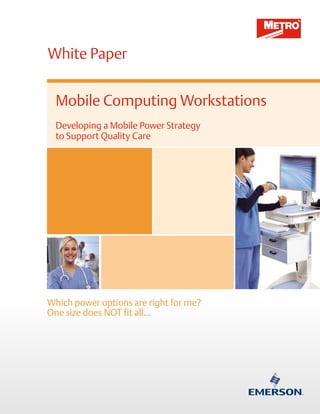This document discusses developing a mobile power strategy to support quality patient care through mobile computing workstations. It notes that different hospital departments have unique power needs, and there is no one-size-fits-all solution. The document evaluates various power system options for mobile workstations, including lithium-ion nanophosphate batteries that can last the lifespan of the workstation, providing long runtimes of over 12 hours on a single charge. It also discusses factors like battery chemistry, charging time, regulatory compliance, and the benefits of DC power architectures to support efficient mobile computing.










